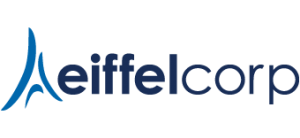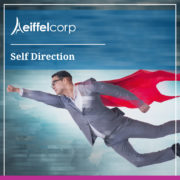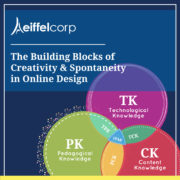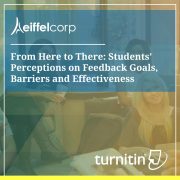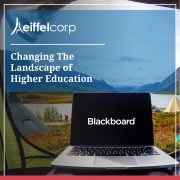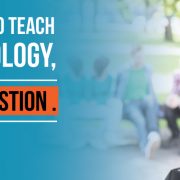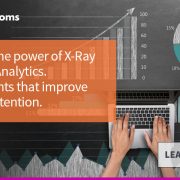
Self Direction:
Getting every student to take responsibility for their own learning and why it will become one of the most important skills in the automated economy of tomorrow.
Okay, a show of hands. Who’s taken a MOOC (Massively Open Online Course) recently?
Not bad. About 58m people signed up for open online courses in 2016 (Shah, 2016) through the top five most popular open course platforms like Coursera, edX, and Futurelearn. Excellent progress then as the number of course offerings and sign-ups is still increasing ever since the MOOC phenomenon showed up around six years ago.
Okay, but wait. How many of those students actually completed those courses they signed up for? The answer is few. Very few in fact. The numbers are hard to confirm but it sits somewhere between 3% – 10%.
These figures have been the bane of the MOOC movement for some time and there is an ongoing process of innovation amongst OER (Open Educational Resource) developers to improve the numbers.
However, what is really behind the poor completion rate we see here and how does this compare with completion rates in traditional courses that universities and colleges offer?
In the new world of education that is increasingly dominated by a culture of technology application to achieve the learning aims the fostering of self-direction and self-motivation to complete courses and programmes of learning is becoming ever more important than before and extends beyond the influence of the undergraduate university student all the way to the professional development that every worker needs to undergo as well.
For the some the transition has been difficult to accept, but, it is becoming quite apparent that the skills for teaching and the way in which we gather and learn new things is changing drastically. No longer can the subject matter expert dominate the class like they once did in the lecture hall, booming out theorems to a throng of learners who fill their venue because there was nowhere else to acquire the knowledge required for the final exam (unless you paid some poor sap to do your summary notes for you).
The large majority of quality based modern learning programmes require students to engage in a significant amount of asynchronous learning completed through the resources and lessons created online. This means hours of sitting by oneself reading, interacting and developing understanding alone or as part of a physically removed community of learners online. For many, this is an entirely alien experience and takes time for adjustment. Schooling doesn’t typically teach this type of skill either and it isn’t part of their traditional delivery (not yet anyway) so why are we surprised that many students don’t cope well with online learning straight out? And are educators not aware that by improving self-direction we could put a massive dent in the dropout failure rates we see every semester in South African universities and colleges.
Self-direction and the ability to self-motivate can be greatly encouraged in learners if the right approaches are used in developing the online components in courses.
Firstly, educators need to provide a solid structure to their online delivery. Well set out and described learning units, weekly or bi-weekly activities, regular communication and updates from the lead educator and the tutors demonstrates to learners that there is a living presence behind the course and that care is being taken to ensure they feel supported and guided in their learning. Students also need to be provided purpose in the completion of activities online (Garrison, 2003). If they know that reading this particular chapter on historical economic models, for instance, will help them to understand the modern global economy proves to them that making the effort is worth the time taken to consume it – the energy expended must pay off (the typical millennial consumes mountains of data each day but is quickly distracted if the value proposition isn’t immediately apparent)
Secondly, learners must be able to detect a clear path in their online learning development and see each step and where the end of the learning journey lies. Unclear outcomes and unplanned for expectations that require effort beyond what they were prepared to provide will give them every reason to begin questioning the value in completing certain tasks or even the entire course. This is particularly important in the online space as students have to spend more energy reaching out to their contacts and communities in a course to gauge reaction and/or plan their reactions.
Other ways of fostering self-direction could be a simple as setting basic ground rules of engagement and interaction. In traditional face to face environments, the educator could state that a certain exercise should take 1 hour to complete, like a quiz or reading etc. Attaching these types of values and expectations to learning outcomes online greatly assists learners in planning their daily activities and gives them a structure they have seen before. And importantly, make them achievable and understandable. Inundating learners with too information or too many activities can be as arduous as having nothing at all.
Other factors such as rewards, recognition and community development are equally important. By using these factors in the creation of assessments learners can easily gauge their progress and mastery of the subject matter which in turn builds confidence in the online medium and how they are adapting to it. Start with light testing and recognition (tie this into the development of the online course communities and groups i.e. open, unchallenging, reflection on the results and what to improve on) so that learners feel that they share commonality with the other online learners undergoing the same experience and possibly tackling self-motivated learning for the first time.
Using tools such as retention alerts and rules will also enable the lecturer and tutors to identify, early on, those learners who have missed cues to engage with critical content or to continue past a particular point in the course and cue a one-to-one conversation or an automated set of reminders.
Once learners have been encouraged and supported to achieve a developed sense of self-direction it becomes much easier for them to cope with changes and disruptions to their courses and programmes and imparts on them the ability to be far more agile in their own learning (owning it, taking responsibility, call it what you will..). From that point on they can be relied on to complete their learning outcomes on their own, question the value the learning critically and, most importantly, develop faster and more efficient reflexive skills required to function at the higher levels of maturity demanded in high quality online programmes and communities of learning.
And why is this skill so important? It turns out that it’s not just useful while studying before entering the workplace..
With the coming 4th revolution often bandied about in the press and the growing threat of automation of most jobs existing today the ability of professionals and workers to reskill themselves before they are replaced by a more efficient machine or algorithm should be taken very seriously. People will have to be imbued with the skill to drive themselves with reskilling and theoretical development at a much faster pace than before without the luxury of traditional face to face or even one-on-one classes.
Businesses too will need to find ways to reskilling and redeploying potentially thousands of workers who can no longer fulfill a profitable role within the company unless they are self-directed enough to develop beyond their existing skill set. It may even result in fast forwarding the move to the gig-economy model where workers are contracted only for their specific talents one job at a time.
Thinking only a little further, when this context is applied to the South African economy where we already have millions of unskilled participants in the existing labour pool with no means to acquire these new capabilities and who are already so far behind the future scenarios one can begin to draw are rather, lets be honest here, rather frightening.
Providing the means by which to develop self-direction in young learners and for individuals, taking responsibility for ones one future learning and skill development, has never been more important and should be given the focus it deserves due to the far-reaching consequences it may one day have.
References:
GARRISON, D.R., 2003. Cognitive presence for effective asynchronous online learning: The role of reflective inquiry, self-direction, and metacognition. Elements of quality online education: Practice and direction, 4(1), pp. 47-58.
ONLINE COURSE REPORT, 2017-last update, State of the MOOC 2017: A Year of Privatized and Open Education Growth [Homepage of Online Course Report], [Online]. Available: http://www.onlinecoursereport.com/state-of-the-mooc-report/ [07/05, 2017].
ONLINE COURSE REPORT, 2016-last update, State of the MOOC 2016: A Year of Massive Landscape Change For Massive Open Online Courses [Homepage of Online Course Report], [Online]. Available: http://www.onlinecoursereport.com/state-of-the-mooc-2016-a-year-of-massive-landscape-change-for-massive-open-online-courses/ [07/05, 2017].
SHAH, D., 26/12/2016, 2016-last update, By The Numbers: MOOCS in 2016 [Homepage of Class Central], [Online]. Available: https://www.class-central.com/report/mooc-stats-2016/ [07/05





